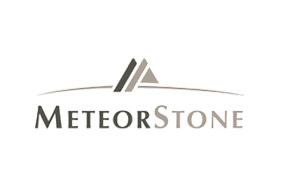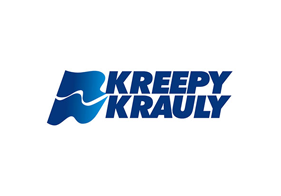Making content for the sake of creating it is messy and disorganised—like throwing spaghetti at a wall to see if it sticks. Perhaps you’ve experienced that yourself. You might find yourself writing blog posts that nobody ever reads, sharing on social media with no engagement, or feeling confused about why your competitor’s content gets shared while yours remains unnoticed.
The reality is that succeeding in content marketing is not a matter of chance. Success in content marketing comes from creating a concrete strategy that guides every piece of content you publish.
Whether you’re a small and medium-sized enterprise (SME) based in Perth or overseeing a national company, mastering the art of crafting an effective content marketing strategy can significantly impact the visibility of your brand and the ease with which customers can find it online.
What is required to effectively transition from aimless content creation to a results-driven content marketing plan for small businesses? Let’s dig into this properly.
Why Most Content Marketing Falls Flat
Before we walk through some how-tos, maybe it’s worth tackling why a lot of businesses get this wrong. Many companies engage in content marketing simply because it is a common practice, rather than as a thoughtful and strategic approach. So they’ll write a blog post here or there, throw something up on Facebook now and then, and then wonder why nobody’s responding.
The issue here is not that they are generating content but that the content they generate is aimless. There is no master plan that holds this all together. No one really knows who they were going after or what people actually wanted to know at that time.
Here’s the difference between the businesses that see returns from their content and those that don’t: planning. The successful ones begin with a holistic content marketing plan that includes everything from audience research to distribution tactics.
Getting Your Foundation Right
Any decent content marketing strategy starts with understanding who you’re actually talking to. Not just demographics, like “women aged 25-45″—that’s surface-level stuff. You need to know what causes your ideal customers to be up at 2:00 AM in the night. What are they trying to achieve? What are they Googling when no one’s looking?
Here’s where the proper research comes in.
- Here’s where to dig for thoughts: Search research tools for Google Keyword planner or SEMrush and find out what people are actually looking for in your industry
- Check out the comments on your competitors’ social media posts
- Look at the questions people ask in relevant industry Facebook groups
- Read through product reviews to see what customers love and hate
- Monitor customer service enquiries for common pain points
Once you have gathered this information, please proceed to create detailed buyer personas that include:
- Their specific goals and challenges
- Preferred content types (videos, articles, infographics)
- Where they hang out online
- Their decision-making process
- What influences their purchasing decisions
This might seem like overkill, but it’s what separates amateur content marketing from the professional stuff.
Your content strategy should also align with your business goals. Are you trying to:
- Generate qualified leads?
- Build brand awareness in your local market?
- Establish authority in your industry?
- Drive direct sales?
Different goals require different approaches, so getting clear on this upfront will save you heaps of time down the track.
Content Planning That Actually Works
When you know who you’re going after and what you want to accomplish, it’s time to organise your content in a thoughtful manner. Yet many companies either oversimplify planning systems or don’t plan enough and then scramble to get ideas week by week.
A good middle ground is a content calendar that provides direction but isn’t rigid. Begin by generating content themes that are relevant to your business and matters of interest for the audience that you’re serving. For landscaping firms, consider including seasonal tips, design ideas, maintenance guidance, and project profiles in your content calendar.
Batch creation is your friend. Allocate a few hours each week to produce several articles at once rather than scrambling week by week. It’s less circuitous and it keeps things organised.
Consider these content types:
- Educational posts that solve specific problems
- Behind-the-scenes content that builds trust
- Customer stories and case studies
- Industry news and commentary
- Promotional content (keep to about 20% of total output)
Start simple with a spreadsheet. Plan 4-6 weeks ahead initially, then expand as you get comfortable.
The Content Creation Process
It takes writing content that people actually want to read. Begin each piece with the question: “What is she adding here?” If you can’t articulate the answer, they won’t find it of value either.
“Blogging” sharpens the blog post for easy scannability. Use titles, bullets and short paragraphs. Begin with a hook, offer valuable information; and end with an obvious next step.
Businesses that enlist the services of SEO experts find themselves creating content that is more strategic. Integrate key topics seamlessly into the text without sacrificing readability. The best content caters to search bots as well as humans.
Visual content is increasingly important. People engage a lot more with posts that include pictures. You don’t have to have a professional photographer for everything, but investing in excellent visuals can be useful, whether they’re high-quality photos, branded graphics or just simple Canva designs.
Distribution and Promotion Strategies
Half the battle is in making outstanding content. The other half is getting it in front of the right people. This is where many companies are getting it wrong: they post content to their website and expect people to mystically stumble across it.
Your distribution plan must be as meticulous and specific as your content plan is.
- Begin with owned channels: Your website, email list and social media profiles form the infrastructure from which to distribute content
- Expand to related communities: Pay it forward by posting the content in industry forums, online groups and social media communities that your audience frequents
- Start an email list (the right way): Regular newsletters with your new writing, plus exclusive access to the best curated content from around the web, can drive traffic back to your site
- Customise content for each platform: What works on LinkedIn won’t work on Instagram. Tailor your content and delivery schedule to the audience on each platform
- Aim for consistency over perfection: It’s better to post regularly on two platforms than it is sporadically across five.
- Cross-promote: Guest posts, podcast interviews, business partnerships and community participation can go a long way to increase your reach
The secret is to create a process instead of posting at random and praying for the best. Carefully structure how you distribute content in the same way that you would meticulously plan your content creation.
Measuring Success and Optimising Performance
You can’t manage what you don’t measure. Putting proper analytics in place from the very beginning will enable you to see what’s working— and what isn’t. Here is how to track success in measurable ways:
- Build a base of solid analytics: Google Analytics and platform-specific metrics (Facebook Insights, LinkedIn Analytics, email metrics)
- Align metrics to your goals: Lead generation: conversion rates and cost per lead. Brand awareness: reach and impressions. Traffic: page views & time on site
- Don’t chase vanity metrics that are not relevant: If they don’t translate to business, all the likes and followers are meaningless. “Focus on metrics that are related to your bottom line.”
- Undertake content audits regularly: Determine which themes correspond to your strong-performing content. Do industry news posts trump how-tos? Do videos outperform photos?
- Use understanding to target strategy: Collect data, and then act on it. Watching them and Determine Content Choices and Calendar Changes Depending upon how your audience behaves, you can then make prompt content decisions and calendar adjustments.
Establish a monthly cadence in reviewing metrics and identifying trends. Content marketing doesn’t happen overnight, so look at the big picture over small results.
Making It All Work Together
The most effective content marketing strategies integrate with other digital marketing efforts. When your content marketing works alongside SEO, social media marketing, and email marketing, the combined effect is much stronger than any single tactic alone.
For Perth businesses, local SEO integration can be particularly powerful. Creating content that addresses local issues, features local customers, or highlights your involvement in the community can help improve your local search rankings while building stronger community connections.
Your website design also plays a role in content marketing success. Content needs to be easy to find, read, and share. Poor site navigation or slow loading times can kill even the best content strategy. Making sure your website provides a positive user experience is fundamental to content marketing success.
Professional photography can elevate your content significantly. Whether it’s product shots, behind-the-scenes photos, or headshots for team bios, high-quality images make your content more engaging and professional-looking.
Getting Professional Help
Even though you can manage a lot of content marketing tasks on your own, there are situations when hiring a professional is wise. If SEO, for instance, is a specialised skill, you must know how technical or algorithm-based the requirements are. If you want to avoid wasting your money, you should possess the necessary skills for paid promotions that draw attention to your content.
Collaborating with a digital marketing agency that has experience in the Perth market could offer you unique insights into local audience preferences and competition. They can even work to connect your content marketing with other types of digital marketing for more comprehensive success.
Many businesses find that outsourcing certain aspects of content marketing – like graphic design, video editing, or email automation setup – allows them to focus on what they do best while still maintaining a strong online presence.
Common Pitfalls to Avoid
Even with a great plan, businesses often fall into certain pitfalls with their content marketing. The biggest one is inconsistency. Posting consistently for a couple of months and then disappearing for weeks kills momentum and confuses your readers.
Another problem is over-promoting. No one wants to read a marketing spiel under the guise of useful information. Try to follow the 80/20 rule—80% thought leadership/educational content and 20% promotional material.
It’s also a problem if you ignore what your audience tells you. Consider comments, shares and engagements. If some topics perform better than others, that’s your audience telling you they want more along similar lines.
Finally, don’t expect immediate results. The results of content marketing multiply over time. You cannot expect content marketing to be effective if you only engage in it for a couple of weeks; it requires consistent effort over months and years to benefit your business.
Moving Forward
Building a high-performing content marketing strategy isn’t about sticking with a rigid formula – it’s based on knowing your audience, consistently delivering real value, and maintaining the effort. Companies that see content marketing as a way to invest in customer relationships, not just a gimmick, do well.
Whether you are a rookie content marketer or you’re looking to enhance your already established efforts in the field of content marketing, always remember that perfection is not objective – progress is. Begin with a sturdy foundation, measure your work, and continue to improve it based on what you discover.
Competition in the online space for Perth businesses is fierce, but those who take steps to deliver real value through content marketing will always get noticed by the people they are looking to attract. All you need is a small amount of expertise and the perseverance to apply that understanding.
Ready to start a content marketing strategy that actually gets real results for your business? The SLINKY team has more than 20 years of digital marketing experience combined with a finger on the pulse of the Perth market to bring you content that resonates and sells.
Contact us today to learn how we can help turn your content marketing from random posts into a strategic growth lever.



























